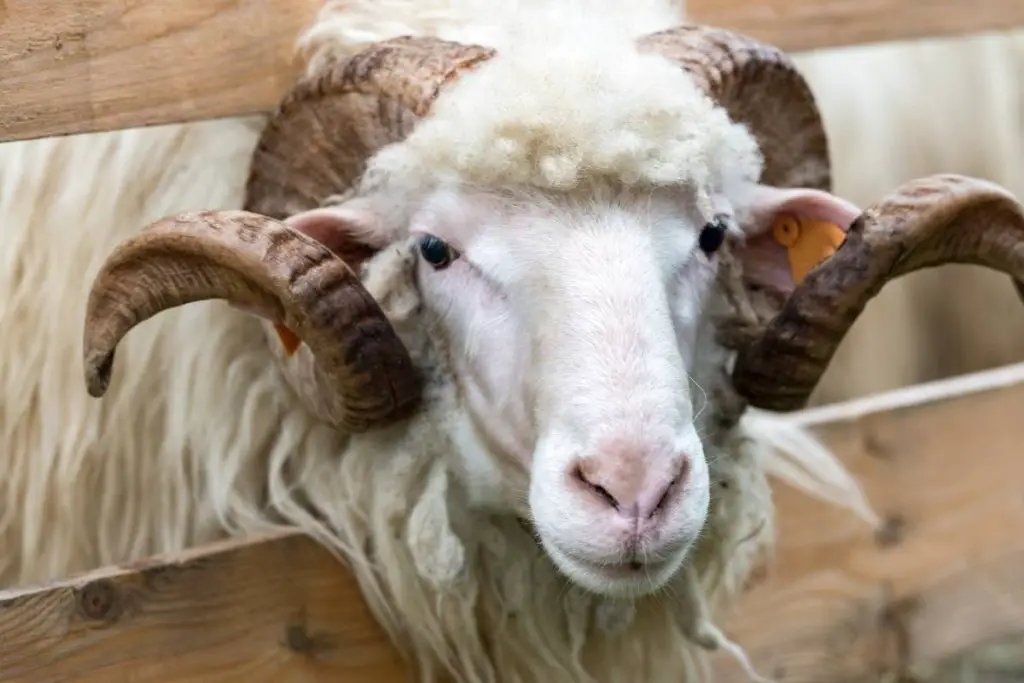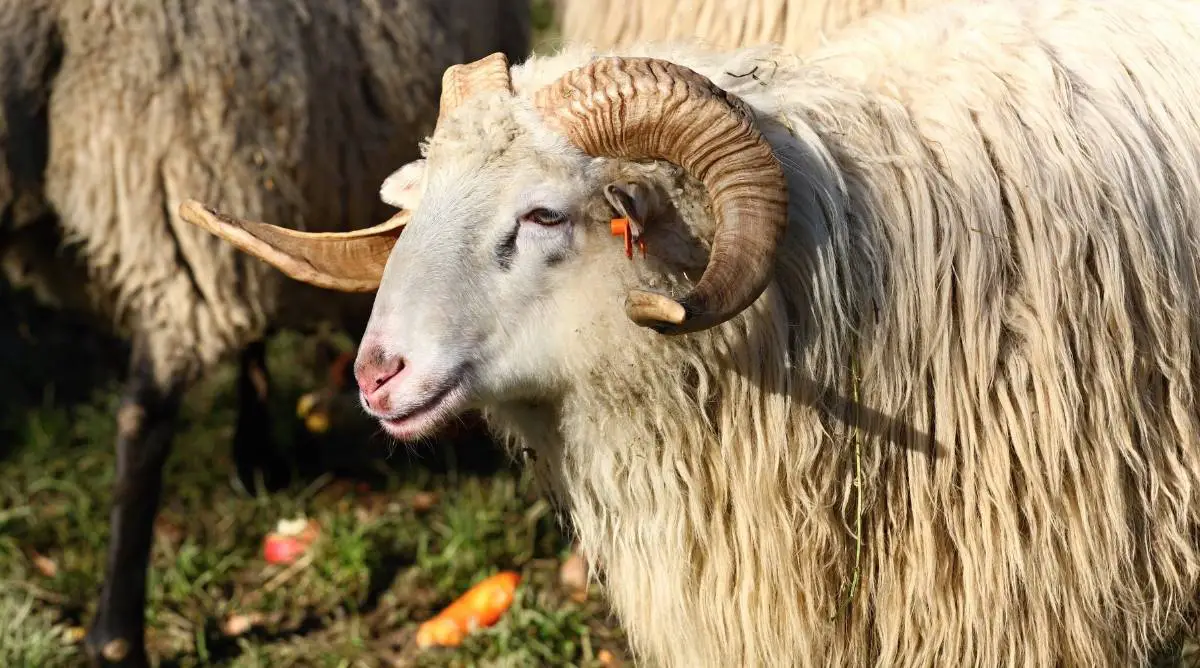A wether sheep is a castrated male sheep. While rams are necessary for breeding, raising wethers is easier because they are less aggressive and can be kept with females. Castration methods for sheep include banding, spermatic cord crushing, and surgical removal.
Table of Contents
What are wether sheep?
A wether is a castrated male sheep. Castration is considered a standard sheep farm management practice. Typically this is done by farmers to prevent unplanned breeding as well as bad behaviors in a flock and enhanced odors during mating season.
Why castrate a ram?
Handling wethers is easier than rams. Although ram lambs aren’t dangerous, mature rams can be aggressive, especially during the breeding season. This behavior can be particularly dangerous in horned breeds of sheep, as horns can easily hurt people or other animals.
Rams also complicate flock management. They need to be managed separately from ewes, whereas wethers and ewes can be put in the same pens. Managing multiple pens results in more overhead for farmers.
Advantages to keeping rams

The main advantage of having rams on your farm is they can be used for breeding. They also have more muscle mass. Because of their increased muscle mass and breeding ability, they sell for more than wethers.
A ram can also more capably defend a flock of sheep by standing up to predators.
Advantages to raising wether sheep
Wethers are easier for flock management. Since they are less aggressive than rams, they can be kept together with ewes. Due to being more docile, whethers can also be kept as companion animals.
How rams are castrated
Male lamb castration is done before the animal starts going through puberty and producing testosterone, ideally in the first week of life.
Castration methods for sheep include:
- Elastrator
- Surgical castration
- Burdizzo Emasculatome
- Elastic band castration
- Callicrate Bander
- Hemicastration
Elastrator
This is the most common ram castration technique. An elastic band is placed around the neck of the scrotum using the elastrator tool while making sure the penis is not trapped in the band. The banding is a bloodless castration method that relies on cutting circulation off so that the testicles fall off in about two weeks.
Surgical castration
Sheep castration is a common surgical procedure, although the most painful to the animal. It’s best done with anesthetics, as pain and stress may cause hypotensive shock.
This method involves surgical removal of the lower third of the scrotum with testicles using a scalpel blade. The wound should heal on its own, as long as sterile tools are used.
Burdizzo Emasculator
A Burdizzo Emasculator is often used in older rams. This tool inhibits the blood flow to the testicles by crushing the spermatic cords with its blood vessels. Using the Emasculator doesn’t require an anesthetic. Both testicular cords should be clamped completely, not crossing the midline of the scrotum.
Elastic band castration
An elastic band cuts the blood supply off from the testicles. It is typically used in animals less than one month old.
Using disinfected applicator pliers, a sterile elastic band is stretched over the testicles and scrotum and placed above the top of the testicles (not at the base of the scrotum).
Callicrate Bander
If you need to neuter an older ruminant, you can use this bloodless, low-stress method.
The Callicrate Bander is a multipurpose, high-tension banding tool that can be utilized for early and delayed castration, horn removal, and prolapse treatment of sheep, goats, and cattle. A latex band is applied around the scrotum, causing them to fall off within 20 to 35 days.
Hemicastration (half castration)
Removing one testicle is usually done to prevent the spread of disease from one testicle to the other when an illness or injury occurs.
Hemicastration involves surgical opening of the entire scrotum and surrounding areas to remove all affected tissues. The wound is closed with a clamp or suture, and the scrotum is usually bandaged for up to 12 hours to prevent bleeding. This is done under general anesthesia, so make sure the animal doesn’t eat for 48 hours or consume water for 24 hours prior to the procedure.
Risks of sheep castration
Potential castration complications include:
- Hypotensive shock during the procedure
- Post-op bleeding
- Hemorrhaging
- Infection, including tetanus
- Inflammation (usually noticeable by excessive postoperative swelling)
- Fly infestation
- Tetanus
- Sepsis
- Scrotal sloughing
- Retained testicle(s)
- Seroma (clear fluid under the skin) formation
- Urinary calculi (bladder stones causing urinary tract obstruction)

